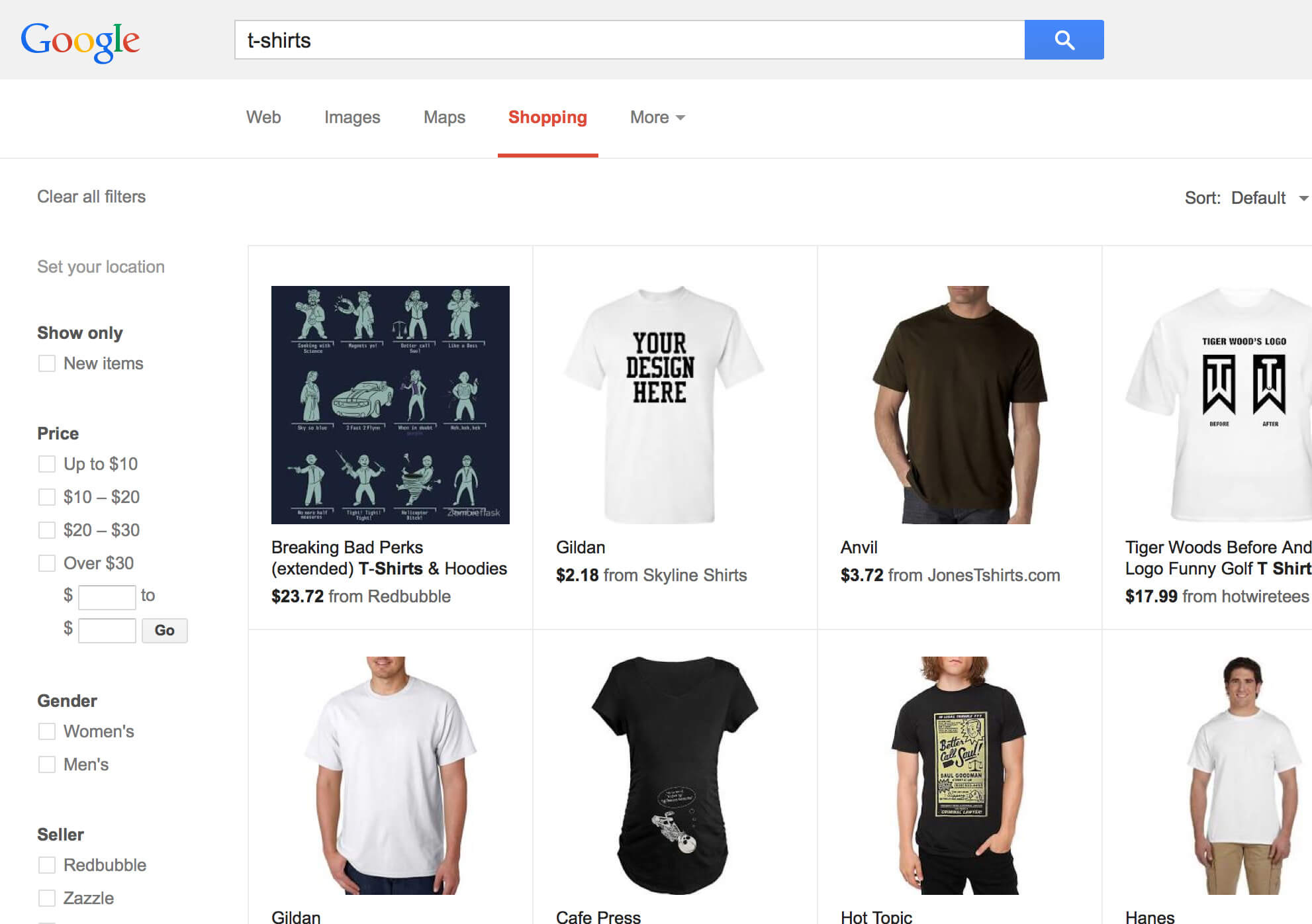Google Shopping (http://google.com/shopping) is Google’s Comparison Search Engine for your Products.
Google has recently changed its policy to only show paid search results, i.e. merchants need to bid to get visibility in search results:
General Google Shopping information
Starting work http://www.google.com/intl/en_us/ads/shopping/
First of all, before your products are exported to Google Shopping, make sure that all mandatory attributes are filled in.
Summary of attribute requirements: https://support.google.com/merchants/answer/1344057?hl=en-GB&ref_topic=3404778
Let us take a closer look at them. There are required and optional (secondary) attributes. Required attributes are: product type, its characteristics, price; optional attributes are those specific for the store itself (e.g. SKU).
If necessary, you can use any other database where the product information is stored. If you use a delimited format (standard) then you need to use the attribute names in the language of the target country (or in English as an international one). Always check that the attribute names are all in the same language.
- If you use XML or API the English words must be taken into brackets.
- For XML and API you must also use an underscore instead of a ‘space’ between words which is forbidden in this case (e.g. “categories_link” instead of “category link”).
- A space, in this case, will mean direct action (attribute value – ‘on sale’).
Primary characteristics
All information about a product is stored in the following sources:
Id – an identifier of the item
Title – product title
Description – product description
Google product category – Google’s category of the item
Link – direct URL to a product on the store site
Image_link – a link to a product image
Additional_image_link – URLs of additional images (e.g. taken from different angles)
Condition – quality and state of a product
Availability and price
This section describes secondary attributes that are necessary to specify whether a product is available (in stock) and what its price is. This data may change, so it is important to enable the Google notification option that will notify the search engine of the changes in your store.
Unique description elements
Unique product identifiers are another attribute type, one of the secondary types we mentioned above:
Global Trade Item Number (EAN);
Manufacturer information;
Product’s brand name.
Regardless of whether this information is present in your store or not, it must be presented to Google in full. For example, clothes should not only have basic features like color, size, and fabric filled, but also the brand, manufacturer’s country, Global Trade item number, creation date. Although this data may look irrelevant, it is necessary for:
- Increasing the volume of successful orders;
- Lifting your store’s rate within the Google platform which makes Google interested in regularly updating your store.
The only exception, in this case, is unique products that need to be ordered in advance. Here the most important part is their description rather than brand or manufacturer.
Remember that, if unique data about a product is not provided by the seller within several days (before updating your store information on Google Shopping), then the system automatically removes all information of that product. Try to always fill all necessary product attributes such as brand, manufacturer country, SKU, upload more images.
Brand – product brand;
Global Trade Item Number (GTIN) – the number of the item;
EAN – manufacturer part number and country
Identifier exists – destination country
Product variants
Group purchases are growing very popular on the web, they are offered on eBay, Amazon, Bing. So, let us review Google Shopping Requirements for group purchases that are defined by Google as ‘product variants’. The most important rule: product variants and separate items that form a product group must have an equal code identifier (e.g. computer is a grouped product, but a monitor, a processor, a mouse and a keyboard are its elements). Google considers this group as a whole and will delete any unknown element with a different identifier.
Apparel
This is a very interesting topic that is why we made it as a separate block. Using Magento ®, it is easy to fulfill all Google data feed requirements, because in most cases you simply export the data from Magento ®, e.g. using GoMage modules or other extensions for Magento ®. But for other store management systems, you may need to fill all data manually.
First of all, define the category. It is ‘Apparel & Accessories’ in this case. Regardless of whether you sell skirts or shoes, all your products related to fashion and style will be located under this category.
Then you have a list of attributes to fill:
- Gender
- Age group
- Color
Also, you cannot ignore ‘size’ attribute. We recommend you check the size data before exporting products. If the data does not match the necessary parameters, Google Shopping can reject your products and even suspend your account (you may find more detailed information on this page Google Shopping Policies: https://support.google.com/merchants/answer/188484).
Use international labeling. There are at least a dozen size tables used by different countries now. Your purpose is to transfer your data into international ones. By default, the English labeling is used.
The products of different colors should have different identifiers. This is only related to the apparel, so if you sell electronics, you may ignore this point.
How to submit data
It is necessary to include a separate value for each of the main attributes considering their parameters, filling rules, group identifiers. Let us take a blue skirt as an example: if one element of this group includes values for color (blue), size (L), category (‘Apparel & Accessories’), then all other elements must be there and have the same identifier but a unique description.
In order to change any parameter you need to change it in your store first, then access your Google Shopping account and change the original data. Google specialists recommend using their assistance in this case. You need to use your email account which is your Google Shopping username to send a request for product parameters update.
What if you sell some unusual items? For instance, adult products or air guns. In this case, you definitely need the assistance of GoMage specialists. In order to export your products into Google Datafeed, you need to use a special extension Feed Extension for Magento ® from GoMage.
This is the best variant to quickly and effectively distribute the information of your product. The main advantage of this extension is that it is able to export not all of your products but only those you choose using filters (e.g. by price). The feed may be set to update automatically every hour, 24 hours, once a week, etc.
You may learn more about Products Feed Specification here: https://support.google.com/merchants/answer/188494?hl=en-GB
We hope that this instruction of filling the most important Google Shopping requirements has been helpful for you. If you have any additional questions, please leave a comment on our blog, and our experts in Magento ® will assist you as soon as possible.






